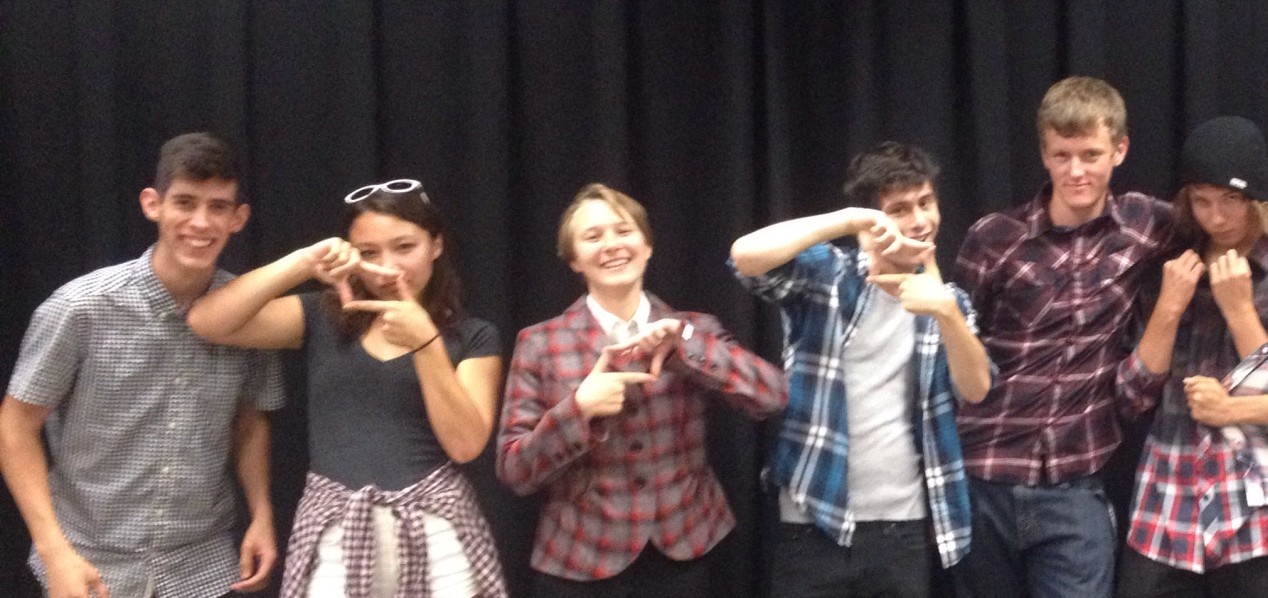I took a theatre history class in high school as part of a summer drama program. I don’t remember much about it.
A graying, distinguished professor. A dusty lecture hall. Passing notes to my friends. Some stuff about the Greeks. That’s about it. Then I went to college, and theatre history was tied to plays, and to production, so of course it made more sense, and fell into place. Somewhat.
Then I started teaching drama. And I felt a responsibility to it. It is, after all, a standard, and shouldn’t we make sure that our creative artists have solid foundations in the why and wherefore of the divine madness?
But it still doesn’t seem to be something which is easy to teach to beginning drama students. And for many of us, who teach a basic, comprehensive drama class, that is a challenge.
The first time I ever attempted to teach theatre history, it was to advanced students, and even they were resistant. Take these kids who feel like they’ve been acting, doing, and start handing them handouts, and lecturing to them, and wanting them to read archaic texts, and there will be pushback. You could, of course, start the year with it, but then how do you ever wake up these potential performers who have been used to doing the book work of academia, but applied to theatre?
You make it active, using the principals of on-your-feet learning.
I’ve been able to jam a lot of content into students by distilling what I’m trying to teach into a few ideas, and putting those ideas into an active context which has a performance component.
Let’s begin with the beginning. Storytelling.
How Did Theatre Begin?
1. Ask your students: How did theatre begin? You can do this as a quickwrite, a snowball (write it down, throw it across the room, everyone pick up someone elses) a think/pair/share. You can have them actively make group sculptures that demonstrate their ideas.
2. Record their responses in physical form so that they can be referred to. On the whiteboard, on butcher paper, on your cool smartboard thing. Whatever.
3. They will give you responses that don’t go far back enough. Push them to get to early man, to groups of people who were trying to survive, who were governed by what we now call “magical thinking,” a kind of thinking that made them create rituals in order to safeguard themselves.
Ritual can be defined as 1. A religious or solemn ceremony consisting of a series of actions performed according to a prescribed order. 2. of, relating to, or done as a religious or solemn rite.
Depending on your population, feel free to emphasize or deemphasize the religious element of this discussion. I go to great lengths to point out that when I mention religion in the classroom, as I frequently do while discussing theatre history, I am doing so in a way which considers religion as a force in culture rather than emphasizing any particular religion’s approach to anything.
You can bring up the commonly held theory that theatre evolved from ritual, and that you can divide early ritual up into a few performative elements:
Elements of Ritual
1. Shamanism ( a medicine man or woman who was responsible for preserving stories and traditions of a people, connecting the past, present and future, present in the traditions of ancient civilizations around the world. Frequently used illusion and spectacle to communicate with those seeking guidance. )
2. Storytelling (oral traditions)
3. Music (chanting, rhythm, songs)
4. Dance (everything from imitating animals to recreating historical events to stylizing the preparations for coming of age ceremonies and weddings)
Types of Ritual
Now ask your students to give you examples of rituals, from ancient to modern, and classify them into 3 types.
1. Power (inagurations, parades, openings of athletic events, other civic ceremonies, graduation)
2. Pleasure (weddings, christenings, prom)
3. Duty (funerals, taking the SAT, naming ceremonies, christenings, voting, attending religious services)
Creating a Ritual
You can choose to handle this as a solo performance or a group project.
1. A Moment from Life is a project most of us do in some way, and it connects very well to ritual if one looks at ritual in a personal context, which is a really appropriate way to characterize it with beginning students. I have a set of directions for this in my store.
2. Group Ritual is another fun way to see if students have internalized this. Have students depict a ritual, anything from brushing teeth to swearing in the president using the elements of ritual. In other words, their piece should incorporate shamanism, storytelling, music or dance, or some combination of the four, with the intention of either elevating the routine or placing the sacred and specific into some sort of epic context.
Whatever way you do it, these are really fun for students to work on, and they have the effect of cementing the purpose of ritual and the placement of ritual within the context of performance studies for them.
You can wrap this up with a discussion or journal or exit ticket, but you will be surprised at how “doing” a historical context can help students remember its placement and context.


